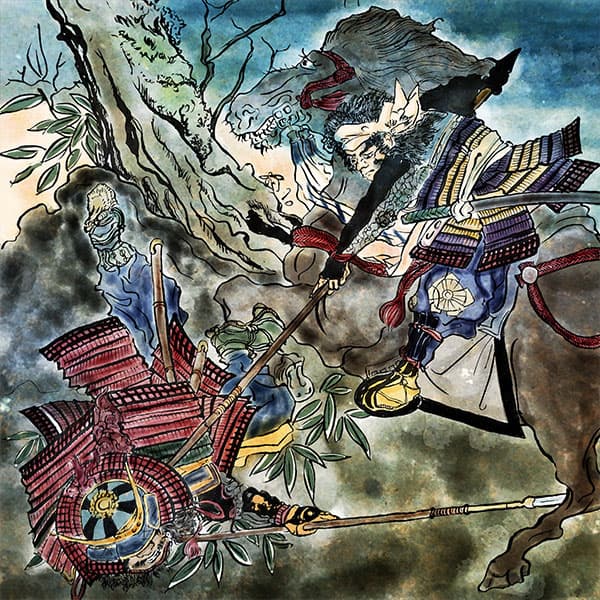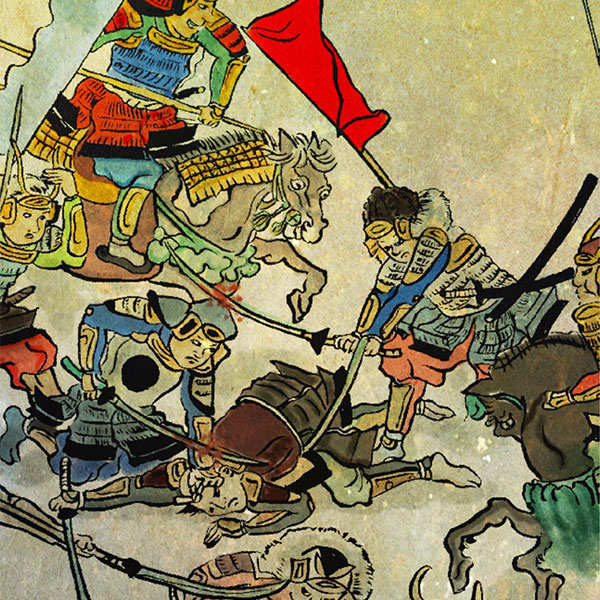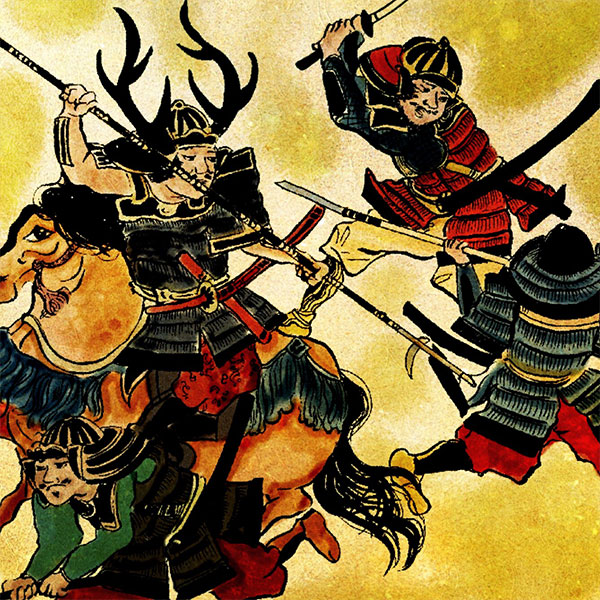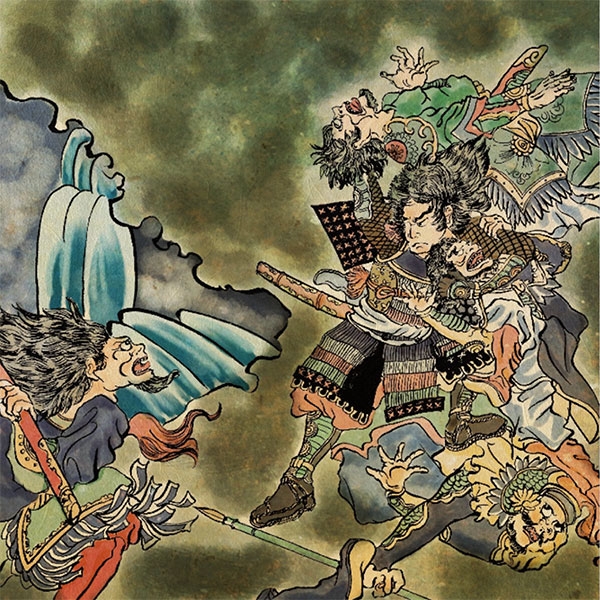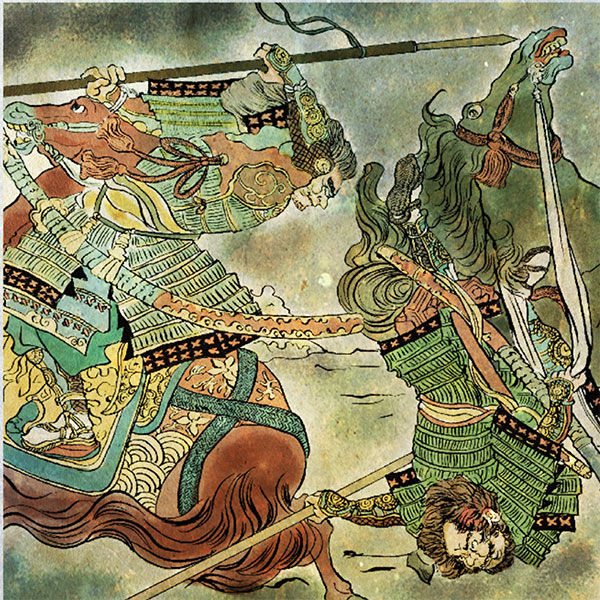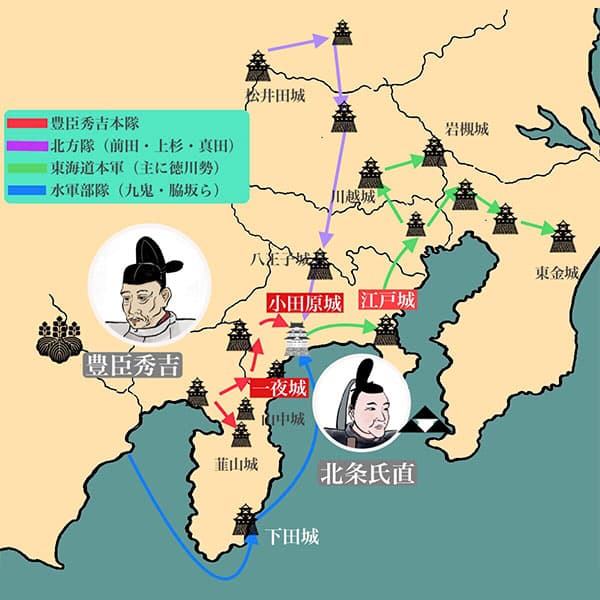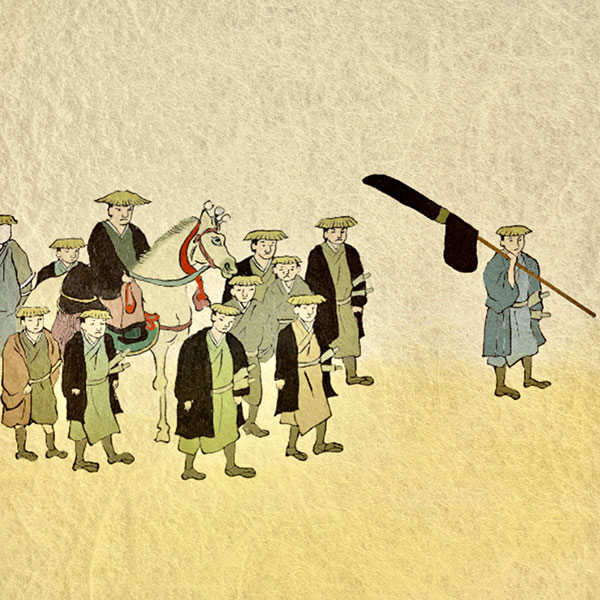Masanori Fukushima (2/2)Seven spears of Shizugatake
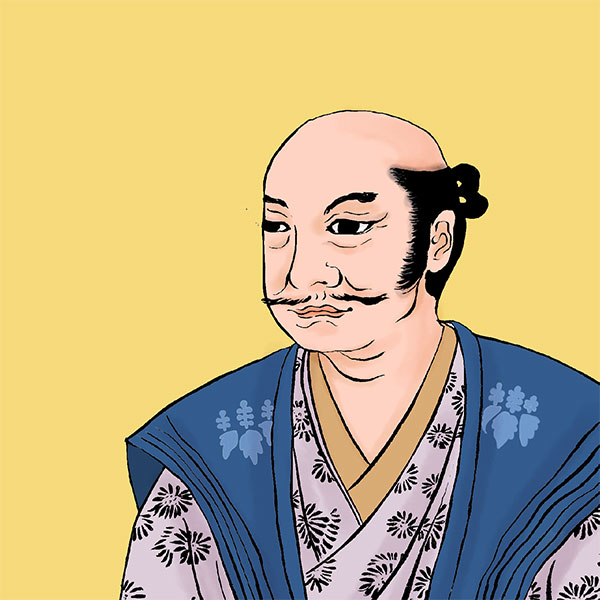
Masanori Fukushima
- Article category
- biography
- name
- Masanori Fukushima (1561-1624)
- place of birth
- Aichi prefecture
- Related castles, temples and shrines

Hiroshima castle

Kiyosu Castle
- related incident
When the feudal lords serving in the army learned of this, they were upset. However, while all the feudal lords were upset, there was one who spoke out first. This is Masanori Fukushima. Masanori, who hated Ishida Mitsunari, declared that he would join the Tokugawa family in defeating Mitsunari, and the surrounding daimyō agreed and united. The Tokugawa family and various feudal lords decided to subdue Ishida Mitsunari. Masanori Fukushima and other feudal lords headed to Osaka first, defeating Nobuhide Oda (grandson of Nobunaga Oda, lord of Gifu Castle) who had sided with Ishida on the way.
In the main battle of Sekigahara, Masanori Fukushima took up position at the head of the Tokugawa side and fought against the Ukita family. Pushed by Zento Akashi, the vanguard of the Ukita family, they retreated for a while, but they continued to advance and retreat. However, in the afternoon, Ishida's side revealed betrayal, and all the generals who had supported Ishida's side completely collapsed. When Masanori arrived at Osaka Castle, he succeeded in seizing it peacefully, and was able to receive Aki Hiroshima and Bingo Tomo 498,000 koku as rewards after the war. Masanori Fukushima, the lord of Kiyosu Castle in Owari Province, changed his control to Aki Province.
Kaiyi and his later years
In 1600, Masanori Fukushima gained territory in Hiroshima as a result of the Battle of Sekigahara.
However, immediately after arriving in the territory, they began actively building and renovating castles. However, when Tokugawa Ieyasu found out about this, he became furious at Masanori, who was renovating the castle without permission. Masanori, fearing Ieyasu, hurriedly demolished the castle he had built, but left behind some ruins. Although Masanori was obedient to the Tokugawa family, he also established himself as lord over Toyotomi Hideyoshi, the son of Toyotomi Hideyoshi.
However, Tokugawa Ieyasu and Toyotomi Hideyori had to fight. This is Osaka's team. Toyotomi Hideyori asked Masanori to take his side, but Masanori refused. Masanori supported Hideyori behind the scenes by diverting military supplies and sending his relatives as ronin, but Masanori himself was ordered to serve as a guard in Edo and remained behind.
In this way, the Toyotomi family, which had supported Masanori Fukushima, was destroyed at the Battle of Osaka. This happened after the Osaka Siege ended. In 1619, the Edo Shogunate was accused of making unauthorized repairs to the stone walls of Hiroshima Castle. Because Masanori failed to deal with the situation, his territory was reduced from Hiroshima and transferred to 45,000 koku in Uonuma District, Echigo Province (present-day Niigata Prefecture).
After moving to Echigo Province, he handed over the headship of the family to his eldest son Tadakatsu Fukushima and retired. However, in 1620, Tadakatsu passed away, and Masanori returned about half of his territory to the shogunate.
In 1624, Masanori passed away at the age of 64. The Fukushima family also confiscated the remaining 20,000 koku because their vassals had cremated Masanori's body before the shogunate's coroner arrived, and the response was deemed inadequate. This ended the Fukushima family as daimyo, but Tadakatsu's eldest son was summoned to the shogunate and continued as hatamoto.
Japan issue and Kurodabushi
Masanori Fukushima had a proud spear called ``Nihongo'' (also known as ``Drinking Spear'') given to him by Toyotomi Hideyoshi. One day, Tomonobu Morosato, a vassal of Kuroda Nagamasa, visited Masanori's mansion as a messenger.
Momari was known as a heavy drinker. Masanori, who loves drinking, offers alcohol to the alcoholic Mazato, but Mazato, who was visiting as a messenger, firmly declines. When Masanori said, ``I'll give you whatever you want if you drink the big glass,'' Mori successfully drank all the sake and asked for the Japanese edition.
Masanori had no choice but to give Momori the Nihongo, which is why the name Nihongo came to be known as ``Drinking Spear.'' This is where Fukuoka City's folk song ``Kuroda Bushi'' was created.
However, Masanori deeply regrets giving him the Japanese name. I negotiated with Nagamasa Kuroda, the owner of Morisato, to have him returned, but Morisato stubbornly refused, and the relationship between Masanori and Nagamasa Kuroda also deteriorated. Shigetoshi Takenaka, who could not see this, mediated between the two parties and reconciled, and as a proof of the reconciliation, he exchanged Nagamasa's helmet, ``Great buffalo wakitate helmet,'' with Masanori's ``Ichinoya mae stand helmet.''
Incidentally, the Nihongo is considered one of the three great spears in the world, and to this day is on permanent display at the Fukuoka City Museum.
Place related to Masanori Fukushima
- Fukushima Masanori birthplace monument
- Ama City, Aichi Prefecture is the birthplace of Masanori Fukushima. Masanori Fukushima was born in this area in 1561 as the son of an okeman, grew up as a military commander under the care of Toyotomi Hideyoshi, and lived in the Warring States period.
A monument commemorating his birth was erected at Futatsudera Temple in Ama City, and there is also a family temple of Masanori nearby. There are also places related to Fukushima Masanori such as Masanori Bridge and Masanori Elementary School in the surrounding area. - Statue of Masanori Fukushima
- The bronze statue of Masanori Fukushima is located on Nayabashi Bridge, near Fushimi Station in Nagoya City. Horikawa was created in 1610 for the purpose of transporting materials for the construction of Nagoya Castle. The person who excavated the Horikawa River was Masanori Fukushima (or as one of the feudal lords ordered to do so). Horikawa contributed to the development of Nagoya as an important waterway, and to commemorate this, a statue of Masanori Fukushima was erected on Nayabashi near Horikawa.
Festivals related to Masanori Fukushima
- Bingo "Odori"
- Bingo's ``Odori'' is a festival held in early November every year in Tojo-cho, Shobara City, Hiroshima Prefecture. This is a traditional event that has continued for more than 400 years since the Edo period, with 100 people parading around in gorgeous mother's robes, Hana Doji, daimyo parades, and warrior parades. ``Odori'' began when Ikkatsu Nagao, one of the three chief retainers of Masanori Fukushima, who was given territory in Hiroshima, was appointed lord of Goshindake Castle, Higashi Castle in Bingo Province. The festival is said to have been created by Ikkatsu Nagao, who celebrated the victory at Sekigahara by adding a warrior procession to the festival procession.
When the Fukushima family was abolished, the Asano family took over. During the time when the Asano clan ruled, the autumn festival at Tojo was held for five days starting from November 1st and was called the ``Goka-matsuri.'' Furthermore, in 1719, at the request of the Tojo Asano family, who was the chief retainer of the Asano family, the mikoshi from Kawanishi Hachimangu Tenjin Shrine was brought to Tojo, and a procession of mikoshi was carried out through the streets of the town to return to Hachiman Shrine. We started calling it "Odori". From those traditions to this day, we hold an ``Odori'' parade in autumn.
- Yobuko Great Tug of War
- The Yobuko Great Tug of War is a two-day festival held in Karatsu City, Saga Prefecture, on the first Saturday of June (children's tug of war) and Sunday (adult tug of war). It has been designated as a nationally designated Important Intangible Folk Cultural Property. The townspeople are divided into Urakata (Oka-gumi) and Sakikata (Hama-gumi), and at the signal of the dora and the fire arrow, they call out ``yoisa yoisa'' and compete against each other over the tug of war three times. The winner is the one who wins twice, and it is said that the year when Urakata (Oka group) wins, there will be a good harvest on land, and the year when Sakikata (Hama group) wins, there will be a big catch at sea.
It is said that it was originally started when Masanori Fukushima and Kiyomasa Kato, who were stationed at Nagoya Castle during the dispatch of troops to Korea, used the ropes of warships to pull the ropes to boost the morale of their soldiers.
Cheongju Castle
Kiyosu Castle was given to Masanori Fukushima by Toyotomi Hideyoshi.
Kiyosu Castle was built in 1405 by Kanrei Shiba Yoshishige. Around 1478, the guardian post was moved to Kiyosu Castle, which became the center of Owari Province. After that, it prospered as the main castle of the Oda family, the shugo (shugo) who ruled over the four districts of Owari Shimogun.
In the first year of Koji (1555), Oda Nobunaga captured Kiyosu Castle due to internal conflict within the Oda clan, and Nobunaga moved from Nagoya Castle.
I moved there and made it my base for about 10 years. After Nobunaga died in the Honnoji Incident in 1582, the Kiyosu Conference was held at Kiyosu Castle. The castle was inherited by Nobunaga's second son, Nobuo Oda. In recent years, it is believed that around the time Nobuo inherited the castle, the Tensho Earthquake occurred and the castle suffered significant damage. Nobuo carried out major renovations and restored Kiyosu Castle.
After Toyotomi Hideyoshi conquered Odawara, Hideyoshi ordered Nobuo Oda to move his territory. However, Nobuo refused this. As a result, Nobuo's territory was lost to Hideyoshi, and Kiyosu Castle was also taken away. The castle was incorporated into the territory of Hideyoshi's nephew, Toyotomi Hidetsugu, and then became the residence of Fukushima Masanori in 1595. Masanori participated in the Battle of Sekigahara when he was the lord of Kiyosu Castle.
After the Battle of Sekigahara, Owari Province came under the control of the Owari Tokugawa family, and Tokugawa Ieyasu ordered the base of Owari Province to be moved to Nagoya, and Kiyosu Castle and its castle grounds were used as materials for Nagoya and were abandoned. I did.
Hiroshima castle
In the late Muromachi period, the Mori family ruled the Chugoku region.
During the era of Terumoto Mori, he belonged to the Toyotomi family and his opportunities for battle gradually decreased. Therefore, Hiroshima Castle was built in search of a castle and location within the territory that would be easier to govern. It was completed in 1590 and completed in 1599.
After the Battle of Sekigahara, Masanori Fukushima ruled Hiroshima. Masanori hired Anatashu, a stonemason by trade, to carry out large-scale renovations. The aim was to make the city a more economic center by mainly renovating the townspeople's town and roads. However, this renovation work, which was carried out without notification to the Edo shogunate, angered Tokugawa Ieyasu, and later the Fukushima family's territory was confiscated because the reconstruction work from the river flooding was also reported without notification.
The Asano family ruled Hiroshima after the Fukushima family. Most of Hiroshima Castle's renovations were completed during the era of Masanori Fukushima, and during the era of the Asano family, only minor renovations were made, such as repairing the base of the turret. Thus, Hiroshima Castle entered the Meiji era under the rule of the Asano family. In the Meiji era, many of the buildings were lost due to fire and demolition in 1874.
Hiroshima Castle was given another name, ``Koi Castle'', because the name of the place where the castle was located was called ``Koi no Ura'' in ancient times, and even today, Hiroshima Prefecture is given a name derived from carp. It is being
Reread the article on Masanori Fukushima
- related incident

- WriterTomoyo Hazuki(Writer)I have loved history and geography since my student days, and have enjoyed visiting historical sites, temples and shrines, and researching ancient documents. He is especially strong in medieval Japanese history and European history in world history, and has read a wide range of things, including primary sources and historical entertainment novels. There are so many favorite military commanders and castles that I can't name them, but I especially like Hisashi Matsunaga and Mitsuhide Akechi, and when it comes to castles, I like Hikone Castle and Fushimi Castle. Once you start talking about the lives of warlords and the history of castles, there's a side of you that can't stop talking about them.



